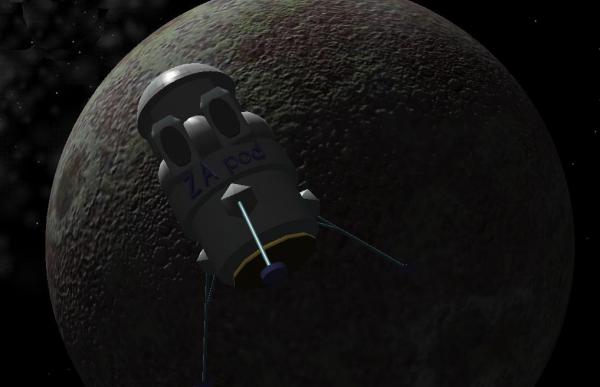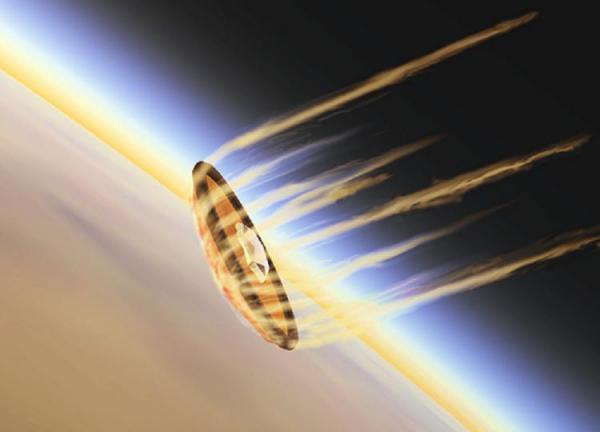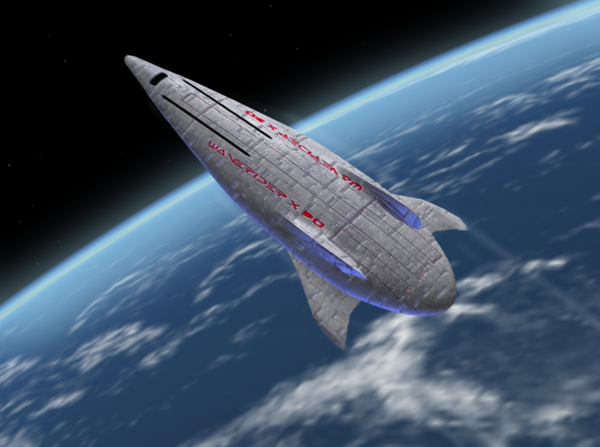BY LETTER
Landers
Technology > Application > Transportation > Ships
Technology > Application > Transportation > Surface-To-Orbit Transport
Craft designed to land on a planet; usually a secondary craft or module attached to or carried by a larger interplanetary or interstellar craft.Technology > Application > Transportation > Surface-To-Orbit Transport
These craft must be capable of decelerating from orbital speed to rest on the planet's surface, and (if a return journey is anticipated) capable of launching in part or in whole from the surface to orbit again.
Landers that do not use aerobraking
 Image from Steve Bowers | |
| A Zapod-class lander. Landing craft designed to land on, and take off from, planets and other objects with little or no atmosphere, cannot use aerobraking or aerodynamic lift. Such craft must use thrust during both landing and take-off procedures. | |
 Image from Steve Bowers | |
| Landing Place Cathedral on Argelander: The place where the first colonists landed on the planet Argelander is marked with a magnificent Byzantine cathedral, including a stone replica of the landing ship itself | |
Landers that use aerobraking and aerodynamic lift
If the target planet or object has a suitable atmosphere, a lander may use aerobraking techniques to slow from orbital speed. A wide range of effective aerobraking shapes and parachute types have been developed for this purpose. Image from Steve Bowers | |
| Aerobraking lander craft used by House Stevens at Tierra del Fuego | |
The presence of an atmosphere can also be useful when launching from the surface, if the craft can use aerodynamic lift and/or combustable elements in the atmosphere for fuel.
 Image from Steve Bowers | |
| A Hypersonic Waverider shuttle, capable of landing and taking off from a planet with an Earth-like oxygen-bearing atmosphere (and a spaceport with a sufficiently long runway) | |
Related Articles
Appears in Topics
Development Notes
Text by Steve Bowers
Initially published on 17 August 2012.
Initially published on 17 August 2012.






